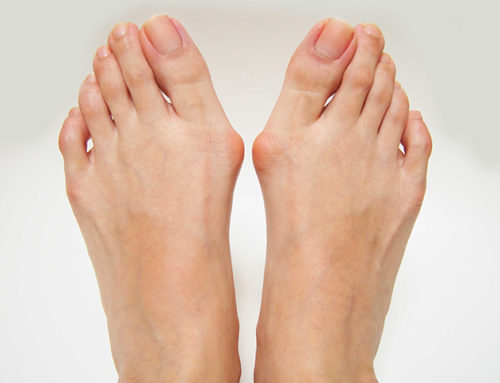Referrals from general practitioners to podiatrists: did a new study get it wrong ?
A recent published study from the Netherlands conducted by Rasenberg and coworkers concluded that referral of patients with plantar heel pain by general practitioners (GPs) to podiatrists for custom orthotic insoles provided no benefit after 12 weeks of follow-up.1 In fact, the study showed that patients given the “usual care” provided by GPs resulted in less pain during activity compared to the group referred to a podiatrist for custom insoles. However, the difference was only one point on an 11-point numerical rating scale and did not meet the standard of minimal clinical important difference. A secondary finding of this study was no measurable benefit for patients receiving customized inserts compared to sham inserts in reducing heel pain or improving function after 12 weeks of treatment.1
Although the study by Rasenberg and team limited the treatment by the podiatrist to only providing insole therapy, the inference from the report was that a GP could manage plantar heel pain without the need for a podiatrist. Rasenberg et al state in their conclusion: “Referral to a podiatrist for a custom-made insole does not lead to a better outcome compared to sham insoles or compared to GP-led usual care.”1
If referral for podiatry treatment is limited to only providing custom insoles, then the findings of this study are not surprising, in my opinion. Furthermore, the insoles used in this study are not typical of custom functional foot orthoses commonly prescribed by podiatrists here in the United States. Specifically, the podiatrists in the Netherlands participating this study fabricated insoles using foam box impressions which were modified with the arbitrary addition of wedges and arch support. In comparison, functional foot orthoses favored by American podiatrists are fabricated from non-weight-bearing casts or scans of the feet, incorporate intrinsic balancing of forefoot-to-rearfoot alignment and have additional rearfoot posting for pronation control.2
One can gain further insight and clarification of Rasenberg and colleagues’ findings from an editorial response written by a prestigious group of researchers from Australia.3 In this editorial, Hylton Menz, Matthew Cotchett ,Glen Whittaker, Shannon E Munteanu, and Karl Landorf cite their own recent published systematic review and meta-analysis which found no difference in outcomes of custom insoles and generic, prefabricated devices in the treatment of plantar heel pain.4 However, the authors discuss three significant concerns with the Rasenberg, et al study:
1. The GPs provided more interventions in this study than typical of primary care providers in the Netherlands. In particular, patients receiving “usual care” from the GPs also received biomechanical interventions such as heel cups (41 percent) and corticosteroid injections (15 percent). Also, the patients treated by the GPs had more consultations than those patients treated by the podiatrists (46.2 versus 27.3 percent, respectively).
2. The fabrication of the customized insole was left to the discretion of the 50 podiatrists participating in the study, with no apparent standardization or protocol for the prescription criteria. The rigidity of the insole varied widely among the devices, dispensed to the test subjects without any description of the how or why behind material selection.
3. The sham orthotic provided for comparison did not meet the requirement for providing the most minimal mechanical effect possible.5 In fact, the sham device used in this study was contoured to the 3D shape of the patient’s foot and had a 12 mm heel cup—both features one could expect to have some type of mechanical effect.
In concluding their editorial, Menz and colleagues point out that, in Australia, podiatrists implement a wide range of treatments for plantar heel pain including education, stretching, taping and extracorporeal shock wave, as well as foot orthoses to treat patients with plantar heel pain.4 The podiatrists in the Netherlands participating in the Rasenberg study only provided patient education with an information booklet for exercises, as well as foot orthoses.1
I previously wrote about the shortcomings of self-directed patient treatment of plantar heel pain.6 I have also pointed out the challenges and disappointing outcomes of all standard treatments for plantar heel pain.7 For that reason, I believe that podiatrists should bring all knowledge of biomechanics, rehabilitation and tissue healing to bear when treating patients with chronic heel pain.8
Finally, there are many factors to consider and analyze when looking studies of foot orthoses to treat plantar heel pain.9 The study conducted by Rasenberg and team discussed in this blog is actually the second investigation conducted by the same author which concluded that custom foot orthoses had no value in treating plantar heel pain.10
I discussed the shortcomings of the first Rasenberg study in a previous blog.11 My conclusion is that it is prudent to remind practitioners that we conduct our own “clinical trials” in our daily practices and rely on therapies that work best in our own hands. We should never abandon the power of foot orthotic therapy if it provides reliable, cost-effective, and positive outcomes for our own patients.
REFERENCES




